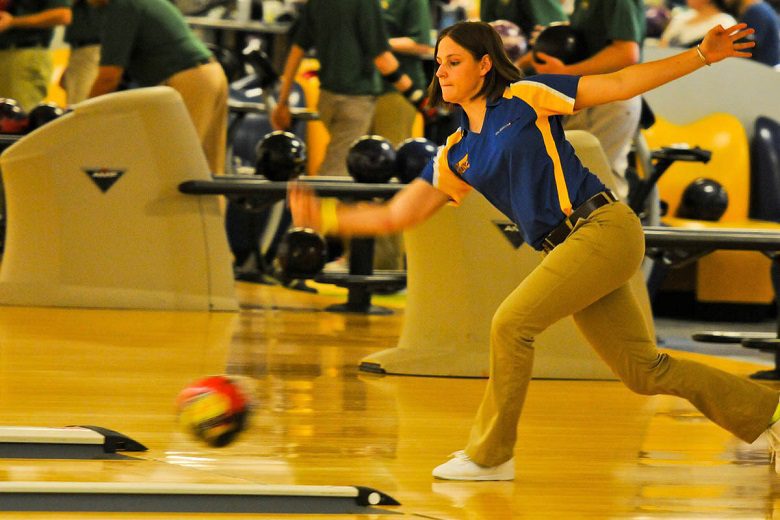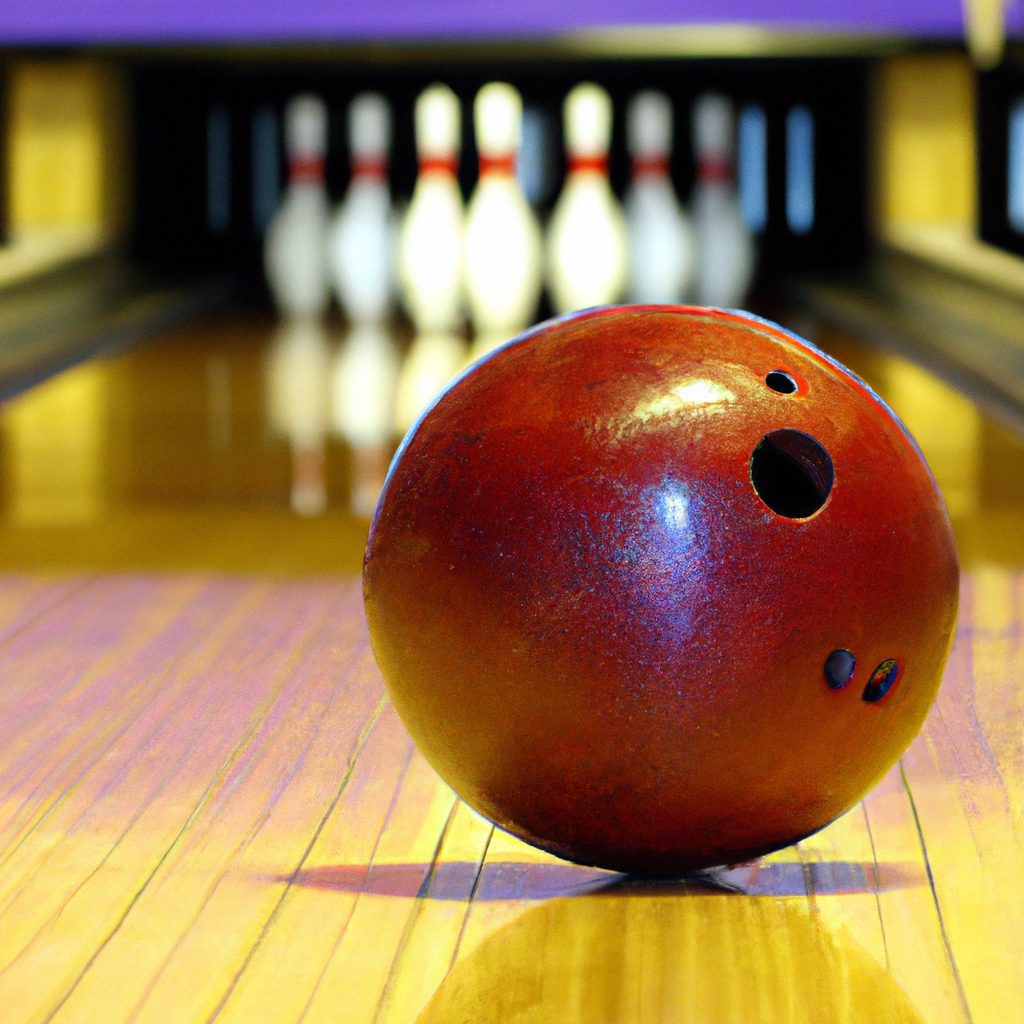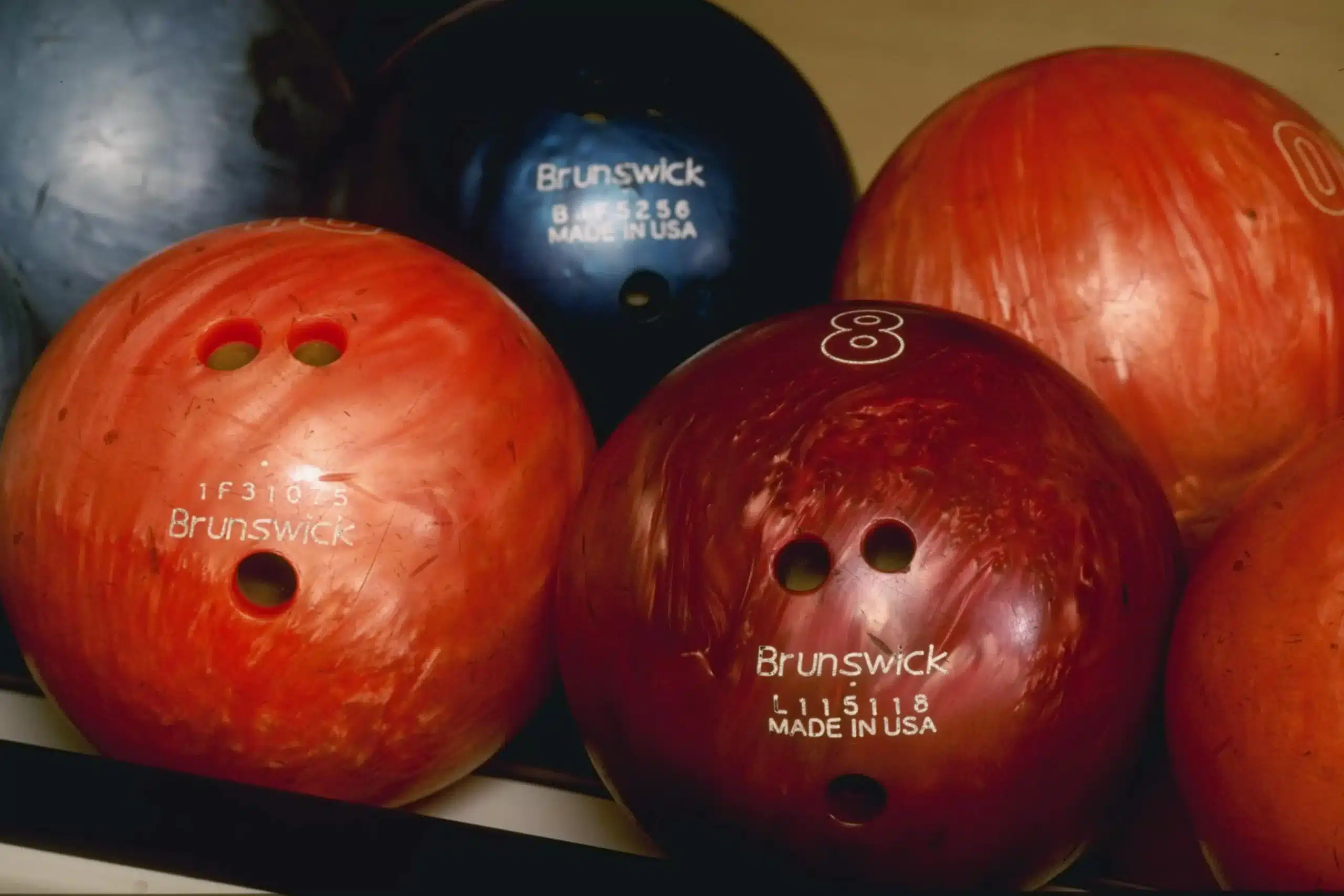Imagine stepping into a bowling alley, the sound of pins crashing and friendly banter filling the air. As we grab the smooth weight of a bowling ball, we can’t help but wonder: how many frames are there in a standard game of bowling? While the answer may seem simple to some, let’s take a closer look at this fundamental aspect of the beloved sport, and unlock the mystery behind the number of frames that make up a game. In a standard game of bowling, there are a total of 10 frames. Each frame provides the opportunity for the bowler to knock down all 10 pins using two throws, except for the tenth frame, which allows for a total of three throws. The aim of the game is to score as many points as possible by knocking down pins with each throw. Let’s dive deeper into the concept of frames and understand how scoring works in the game of bowling.
Review contents
Understanding the Concept of Frames
A frame in bowling refers to a turn or an opportunity for a bowler to throw the ball. In a standard game, there are a total of 10 frames. Each frame consists of two throws, except for the tenth frame, which allows for a possible three throws. The pins that remain standing after the two throws in a frame are counted as the score for that frame. The score from each frame is cumulative, meaning it carries over to the next frame.
Explanation of Pins and Strikes
In bowling, the pins are the targets that the bowler aims to knock down with the ball. There are ten pins arranged at the end of the bowling lane in a triangular formation. A strike occurs when the bowler knocks down all ten pins with their first throw. Scoring a strike is an exciting achievement as it awards the bowler with bonus points and sets them up for a potential high score. Strikes are denoted by an “X” on the scorecard.
The Importance of Spares
A spare is another term used in bowling when the bowler knocks down all ten pins but uses both throws to do so. It means that the bowler didn’t strike in their first throw but managed to clear all the pins with their second throw. Getting a spare is important in bowling as it also awards bonus points and keeps the game competitive. Spares are denoted by a “/” on the scorecard.
The Tenth Frame and Bonus Throws
The tenth and final frame in a game of bowling presents a slight variation in scoring rules. In this frame, a bowler is given the opportunity to throw a total of three times if they score either a strike or a spare. This allows for extra chances to earn higher scores and potentially achieve a perfect game of 300 points. Having an additional throw gives the bowler a chance to increase their score and finish the game strong.
Traditional Games with 10 Frames
The standard game of bowling played around the world traditionally consists of 10 frames. This format is commonly known as 10-pin bowling, which is the most popular variation of the sport. Each of the 10 frames allows for two throws, except for the tenth frame, which has the potential for three throws. This format provides ample opportunities for bowlers to showcase their skills and strategize their moves accordingly.
Number of Throws per Frame
In a standard game of 10-pin bowling, each frame gives the bowler two throws. The bowler aims to knock down all ten pins with these two throws to achieve a strike or a spare. The scoring is determined based on the number of pins knocked down in those two throws. However, in the case of a strike, the second throw of the frame is not taken as the strike itself awards bonus points. The number of pins knocked down on the first throw in a frame affects the scoring potential of that frame.
Exceeding 10 Frames: Extra Frames
While 10 frames are the standard for a game of bowling, there are situations where extra frames may be played. In the event of a tie between players at the end of the tenth frame, additional frames, commonly known as roll-offs, are played to determine the winner. Roll-offs are played with one throw per frame until there is a clear winner. These extra frames provide an exciting climax to the game and add an element of suspense for both the players and spectators.
10-Pin Bowling
10-pin bowling is the most common and popular form of bowling played in North America and many other countries worldwide. It involves using a large ball to knock down ten pins arranged in a triangular formation at the end of the lane. The scoring system in 10-pin bowling is based on the number of pins knocked down in each frame, with strikes and spares earning bonus points. The game consists of 10 frames, with each frame giving the bowler two throws, except for the tenth frame, which allows for a possible three throws.
Five-Pin Bowling
Five-pin bowling is a variation of bowling popular in Canada. As the name suggests, instead of the standard ten pins, only five pins are used. The pins are smaller and arranged in a V-shaped formation. The balls used in five-pin bowling are smaller and have no finger holes, making it easier for players of all ages and skill levels to participate. In five-pin bowling, each player gets three throws per frame, and the maximum score possible in a game is 450.
Duckpin Bowling
Duckpin bowling is another variation of bowling that originated in the United States. It is played with small, squat pins and a smaller ball. The pins are shorter and fatter than the ones used in 10-pin bowling, and the ball has no finger holes. In duckpin bowling, each player gets three throws per frame, just like in 10-pin bowling. Scoring in duckpin bowling is similar to 10-pin bowling, where strikes, spares, and the number of pins knocked down in each frame determine the player’s score.
Candlepin Bowling
Candlepin bowling is primarily played in the New England region of the United States and parts of Canada. It involves using tall, thin pins and a smaller ball without finger holes. The pins are arranged in a triangle at the end of the lane. In candlepin bowling, each player gets three throws per frame. The scoring system is different, with the number of pins knocked down determining the score for that frame. Strikes and spares earn bonus points, similar to other variations of bowling.
First Frame
The first frame of a bowling game sets the tone for the rest of the game. It presents the bowler with the opportunity to start strong and build momentum. The key in the first frame is to make a precise and accurate throw to knock down as many pins as possible. A strike in the first frame not only boosts the bowler’s confidence but also lays the foundation for potential bonus points in subsequent frames.
Midway through the Game
As the game progresses, each throw becomes more critical in achieving a high score. Midway through the game, bowlers often start strategizing their moves based on their scores so far. If a player has achieved multiple strikes or spares, they have the opportunity to increase their score and potentially aim for a perfect game. Conversely, if a player has many open frames (frames where no strikes or spares were achieved), they might focus on improving their accuracy.
Nearing the End of the Game
As bowlers approach the later frames of the game, the stakes become higher, especially if they are aiming for a high score or competing against others. Accuracy and focus are crucial during these frames, as even a small miscalculation can lead to missed opportunities for strikes or spares. Players often feel a mix of excitement and pressure as they aim to finish the game on a high note.
The Final Frame
The tenth frame is the final frame of a standard game of bowling, and it often carries additional excitement and tension. Bowlers have the potential to throw up to three times in this frame, depending on their performance. If a bowler achieves a strike or a spare in their first two throws, they are awarded a third throw for the extra opportunity to score bonus points. The final frame presents a chance for dramatic comebacks or heart-pounding finishes as players aim to maximize their score in the closing moments of the game.
No Strikes or Spares
In scenarios where a bowler doesn’t achieve any strikes or spares throughout the game, their score in each frame is calculated by adding up the number of pins they knock down. These frames are often referred to as “open frames.” While they may not earn bonus points, open frames provide opportunities for the bowler to adjust their strategy and improve their throws in subsequent frames.
All Strikes Except the Last Frame
If a bowler manages to achieve strikes in all frames except for the last frame, they can still earn a high score. The key to maximizing the score in this scenario is to achieve a spare or a strike in the final frame, triggering the bonus throws and potential bonus points. By doing so, the bowler has the chance to add valuable extra points to their overall score and potentially reach a perfect game of 300.
All Spares Except the Last Frame
Similar to achieving all strikes except in the last frame, if a bowler manages to achieve spares in all frames except for the last frame, they still have the opportunity to achieve a high score. By converting the final frame into a spare or a strike, the bowler gains the chance to earn bonus points with the extra throws. These bonus points can significantly impact the final score and potentially lead to a strong finish.
Mix of Strikes, Spares, and Open Frames
Bowlers often encounter a mix of strikes, spares, and open frames throughout a game. Managing this combination of results requires adaptability and strategic thinking. Bowlers should focus on converting open frames into spares, as this ensures they maximize their scoring potential. Achieving multiple strikes and spares can result in a compelling score and a satisfying game.
Points Associated with Strikes
A strike in bowling is not only visually impressive but also highly rewarding in terms of points. When a bowler achieves a strike, they are awarded 10 points plus the total sum of the next two throws as bonus points. These bonus points are added to the score of the strike frame. If subsequent throws also result in strikes, the bonus points are compounded, leading to even higher scores. Strikes have the potential to significantly boost a player’s overall score and set them on the path to achieving a perfect game.
Points Associated with Spares
Scoring with spares in bowling involves earning both the pin count for the first throw of a frame and bonus points. When a bowler achieves a spare, they are awarded 10 points plus the pin count of the first throw in the subsequent frame as bonus points. These bonus points are added to the score of the spare frame. Similar to strikes, consecutive spares can compound the bonus points and substantially increase a player’s score.
Calculating an Open Frame
In an open frame, where neither a strike nor a spare is achieved, the score is simply the pin count of the two throws in the frame. For example, if a bowler knocks down 4 pins in the first throw and 3 pins in the second throw of a frame, their score for that frame is 7 points. Open frames don’t earn bonus points, but they provide an opportunity to regroup and recalibrate for the next frame.
Maximum Score in a Game
The maximum achievable score in a game of bowling is 300, often referred to as a perfect game. To achieve a perfect game, a bowler must throw strikes in all ten frames, including the bonus throws in the tenth frame. With each strike earning 10 points plus the bonus points from subsequent throws, a perfect game showcases exceptional accuracy, consistency, and skill. Achieving a perfect game is a remarkable feat and celebrated in the world of bowling.
Junior Leagues
Bowling offers opportunities for everyone to participate, including junior leagues specifically designed for young players. Junior leagues provide a nurturing and supportive environment for children to learn and practice the sport. These leagues often have modified rules and scoring systems to accommodate the skill level and physical capabilities of younger bowlers. Junior leagues aim to foster a love for the game and develop the potential of young bowlers, allowing them to progress and potentially become future stars in the sport.
Cosmic Bowling
Cosmic bowling, also known as glow bowling, is a popular variation of traditional bowling. It involves dimming the lights in the bowling alley and illuminating the pins, lanes, and other elements with neon or blacklight effects. Cosmic bowling creates a vibrant and exciting atmosphere, with music, colorful lighting, and sometimes even disco balls. It offers a unique and fun experience for bowlers of all ages, adding a touch of excitement to a traditional game.
Bumper Bowling
Bumper bowling is an adaptation of bowling designed for younger or less experienced players. Bumpers, also known as rails or gutters, are placed in the gutters of the lanes to prevent the ball from going into the gutter. This ensures that even errant throws hit at least some pins. Bumper bowling allows beginners to focus on the basic technique of throwing the ball and provides a more enjoyable and inclusive experience for children and newcomers to the sport.
Team Formats
Bowling is often played in team formats, allowing groups of players to compete against each other. There are various team formats, including standard team play, doubles, and mixed doubles. In standard team play, teams consist of three to five players, each taking turns to bowl in a predetermined order. Doubles and mixed doubles involve teams of two players. Team formats add a social and competitive element to the game, fostering camaraderie and teamwork among players.
PBA (Professional Bowlers Association)
The Professional Bowlers Association (PBA) is a renowned organization that governs professional bowling in the United States. PBA consists of professional bowlers who compete in various tournaments, showcasing their skills and vying for prestigious titles. The association provides a platform for professional bowlers to advance their careers and offers a wide range of tournaments, including major championships.
PBA Tour
The PBA Tour is the pinnacle of professional bowling and features a series of tournaments throughout the year. The tour includes some of the best professional bowlers competing against each other for significant prize money. The PBA Tour showcases incredible skill, precision, and technique, as bowlers battle it out on challenging lane conditions to achieve the highest scores and claim victory.
Major Bowling Championships
In addition to the PBA Tour, professional bowlers have the opportunity to compete in major bowling championships. These championships are highly prestigious and offer significant prize money. Some of the major bowling championships include the PBA World Championship, the US Open, the Tournament of Champions, and the Masters. These tournaments attract top bowlers from around the world, providing a grand stage to showcase their talent and compete for coveted titles.
Planning for Spares
Strategically planning for spares is an essential aspect of the game, as they play a significant role in achieving high scores. When aiming for a spare, bowlers often focus on hitting the pocket, which is the space between the headpin and the pins on either side. Hitting the pocket increases the chances of knocking down surrounding pins and successfully converting the spare. Developing consistency and accuracy in hitting the pocket helps bowlers maximize their scoring potential.
Optimizing Strike Opportunities
Strikes are highly valued in bowling, as they not only award higher scores but also set the stage for potential bonus points. To optimize strike opportunities, bowlers analyze lane conditions, adjust their approach and delivery, and aim to hit the pocket with precision. Developing a consistent delivery and adjusting speed and spin based on lane conditions can significantly increase the chances of achieving strikes and ultimately lead to higher scores.
Strategic Thinking in the Final Frame
The final frame of a game of bowling often requires strategic decision-making to maximize potential scores. Bowlers must consider their current score, the pin count from the first two throws of the frame, and any possible bonus throws. Depending on the situation, bowlers may opt for a more conservative approach, aiming for a spare to increase their chances of a higher overall score. Alternatively, if a strike seems within reach, they may take a riskier shot in pursuit of bonus points and a potentially perfect game.
Strike
In bowling, a strike refers to knocking down all ten pins with the first throw of a frame. A strike is denoted by an “X” on the scorecard and awards the bowler with 10 points plus the total of the next two throws as bonus points. Striking in bowling is a thrilling achievement and often sets the tone for building a high score.
Spare
A spare occurs when all ten pins are knocked down using both throws of a frame. To achieve a spare, the first throw of the frame may not knock down all the pins, but the second throw must make up for the remaining pins. A spare is denoted by a “/” on the scorecard and awards the bowler with 10 points plus the pin count of the first throw in the subsequent frame as bonus points.
Open Frame
An open frame in bowling refers to a frame in which neither a strike nor a spare is achieved. It means that the bowler was unable to knock down all the pins with their two throws. An open frame is scored by totaling the number of pins knocked down in that frame. Open frames don’t earn bonus points, but they provide an opportunity for the bowler to regroup and focus on improving their score in the next frames.
Turkey
In bowling, a turkey is achieved when a bowler throws three consecutive strikes in three consecutive frames. It is denoted by marking an “X” for each of the three strikes. Scoring a turkey is an impressive feat that not only boosts a player’s score but also adds excitement to the game. Achieving a turkey often inspires players to aim for more strikes and potentially aim for a perfect game.
Gutter Ball
A gutter ball occurs when the ball rolls into the gutters on either side of the lane without hitting any pins. It is one of the least desired outcomes in bowling as it results in zero points for that throw. Gutter balls can happen due to incorrect release, poor aim, or lack of spin. However, even experienced bowlers occasionally encounter gutter balls, showcasing the challenges and unpredictability of the sport.
Split
A split in bowling refers to a configuration of pins left standing after the first throw of a frame where at least one pin is somewhat isolated from the others. Splits can be challenging to convert into spares since they require precise and accurate throws. Common examples of splits include the 7-10 split, where only the back corner pins remain standing, and the 4-6-7-9-10 split, which involves multiple pins separated by large gaps.
Brooklyn
A Brooklyn refers to a strike achieved by hitting the opposite side of the pocket. For example, a right-handed bowler throwing a ball that hits the left side of the pocket would be considered a Brooklyn strike. Brooklyn strikes are considered fortunate, as they indicate some element of luck or favorable lane conditions. While not intentional, Brooklyn strikes can sometimes help bowlers overcome difficult pin configurations and ultimately earn high scores.
In bowling, the pocket refers to the space between the headpin and the pins on each side. Bowlers aim to deliver the ball accurately into the pocket, as hitting this target increases the chances of achieving strikes and maximizing scoring potential. Hitting the pocket consistently requires a combination of skill, technique, and adaptability to varying lane conditions.
Pin Deck
The pin deck in bowling is the area at the end of the lane where the pins are set up. This is the target area that bowlers aim to hit with their throws to knock down as many pins as possible. The pin deck varies in dimensions depending on the specific bowling alley, but it generally spans the width of the lane and is where the pins are arranged for each frame.
Pin Count
Pin count in bowling refers to the number of pins knocked down with each throw. The pin count is tallied and added to the bowler’s score for that frame. Accurate pin counting is essential for determining the overall score and keeping track of progress throughout the game. The pin count also helps bowlers strategize their next moves based on the remaining pins and their current score.
Bowling is a dynamic and enjoyable sport that offers various formats, scoring systems, and strategic opportunities. Each frame brings new possibilities, and players strive to achieve strikes and spares to maximize their scores. By understanding the different variations of bowling and the scoring system associated with each, bowlers can enhance their gameplay, develop their skills, and experience the excitement that comes with mastering this classic sport. Whether you are a casual bowler or a professional competing in major championships, bowling offers something for everyone to enjoy. So gather your friends, lace up your bowling shoes, and head to the lanes for a fun-filled and competitive game of bowling.




![Spare bowling ball Top 10 in 2024. (reviews) Top 10 Best Spare Bowling Balls [2021 Reviewed]](http://landofbowling.com/wp-content/uploads/2021/07/Top-10-Best-Spare-Bowling-Balls-2021-Reviewed.jpg)























